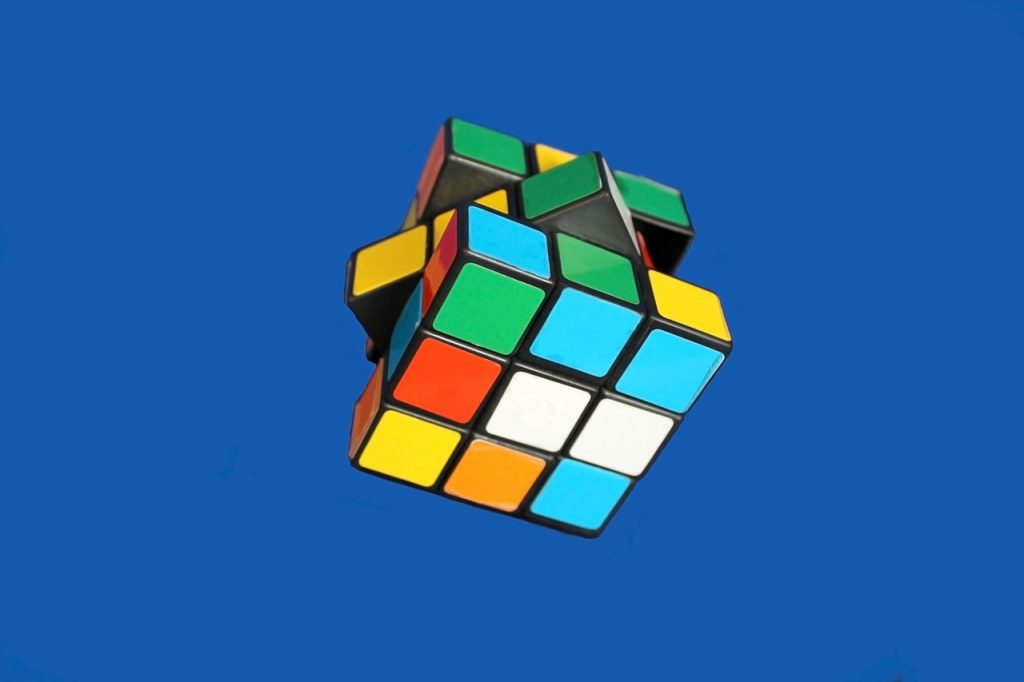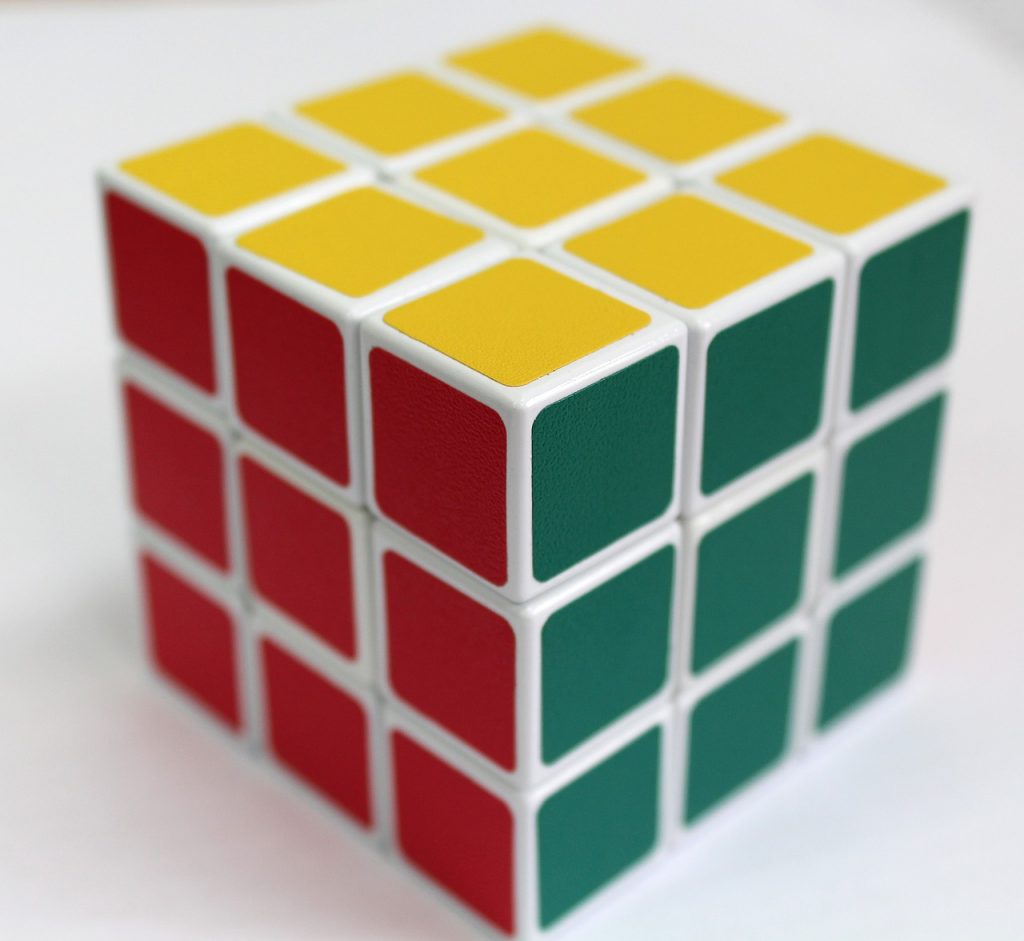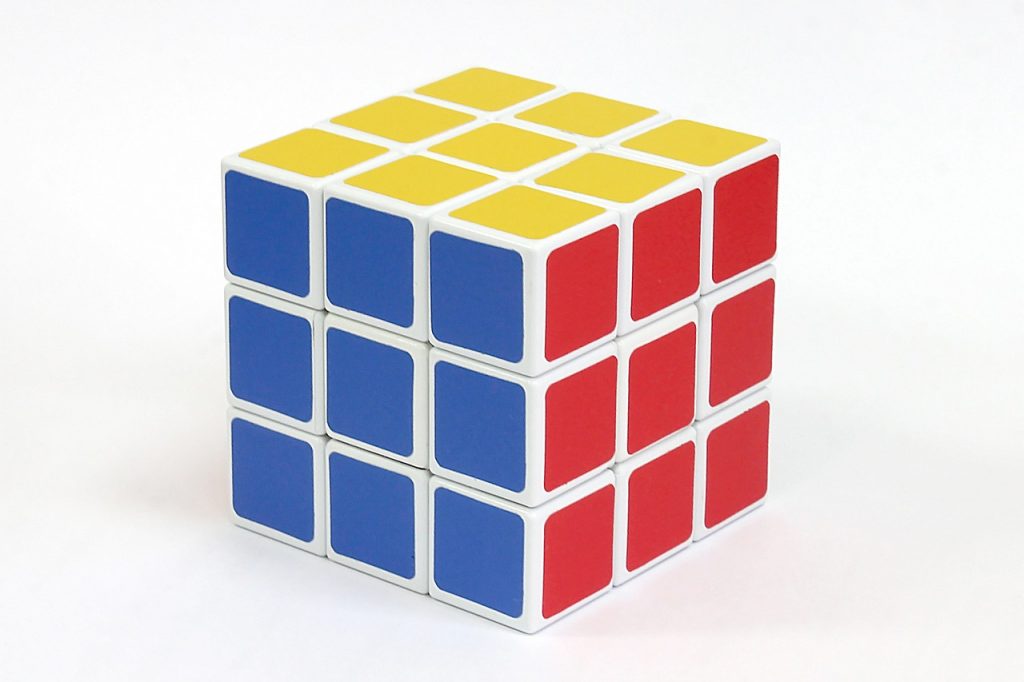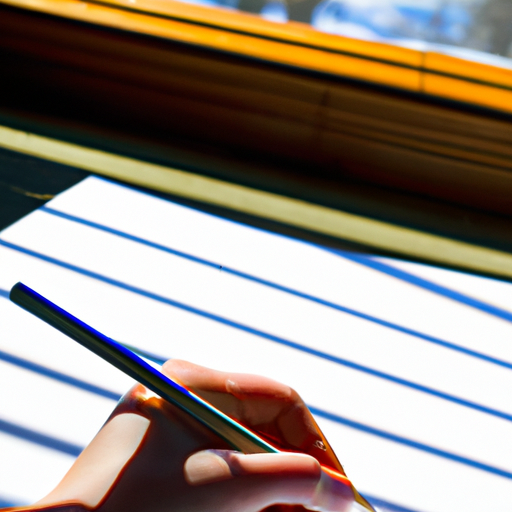Have you ever wondered why some people seem to have a knack for solving problems effortlessly, while others struggle to come up with solutions? It all comes down to creativity. When we tap into our creative side, we unlock a whole new level of problem-solving skills. In this article, we’ll explore the connection between creativity and problem-solving, and discuss how you can enhance both in your own life. So grab a cup of coffee, sit back, and let’s dive into the fascinating world of creativity and problem-solving. You’ll be amazed at what you discover!

This image is property of pixabay.com.
Introduction
Creativity and problem-solving skills are two essential abilities that go hand in hand. They are like two sides of the same coin, complementing and enhancing each other. Whether you are an artist, a scientist, an entrepreneur, or simply someone navigating through the challenges of everyday life, these skills play a crucial role in your personal and professional growth.
In this article, we will explore the deep connection between creativity and problem-solving skills. We will dive into the various types of creativity, understand the importance of problem-solving skills, and examine how these skills can be developed and enhanced. We will also discuss the benefits of nurturing both creativity and problem-solving, and explore their applications across different fields. So, let’s embark on this journey of self-discovery and unleash our full potential!
Understanding Creativity
Defining Creativity
Creativity is often perceived as the ability to imagine and produce original and valuable ideas, solutions, or expressions. It involves thinking outside the box, breaking free from conventional patterns, and exploring uncharted territories. While creativity is commonly associated with artistic endeavors such as painting, writing, or music, it is not limited to the realm of arts. Creative thinking can be applied to various aspects of life, including problem-solving, innovation, entrepreneurship, and even everyday tasks.
Importance of Creativity
Creativity is a fundamental aspect of human existence, influencing our personal and professional lives in profound ways. It enables us to see things from a different perspective, to approach challenges with an open mind, and to find innovative solutions. Creative individuals are often characterized by their ability to think critically, adapt to change, and embrace ambiguity. In today’s rapidly evolving world, where new problems and opportunities arise daily, creativity has become an indispensable skill.
Fostering Creativity
While some people may naturally possess a disposition towards creativity, it is a skill that can be nurtured and developed. Just like any other muscle, our creative muscles can be exercised and strengthened. Engaging in activities that promote creative thinking, such as brainstorming, problem-solving exercises, and artistic pursuits, can help unlock our creative potential. Additionally, creating an environment that encourages curiosity, risk-taking, and experimentation can foster a culture of creativity and innovation.

This image is property of pixabay.com.
Types of Creativity
Artistic Creativity
Artistic creativity is perhaps the most conventional and widely recognized form of creativity. It encompasses various forms of artistic expression, including painting, sculpture, literature, music, dance, and theater. Artists possess the ability to tap into their imagination, emotions, and experiences to create meaningful and thought-provoking works of art. Through their creations, they evoke emotions, challenge societal norms, and contribute to the enrichment of the human experience.
Scientific Creativity
Scientific creativity involves the application of creative thinking in the pursuit of scientific knowledge and discovery. Scientists constantly engage in questioning, hypothesizing, and experimenting to push the boundaries of our understanding. They possess the ability to think critically, connect seemingly unrelated ideas, and devise innovative solutions to complex problems. Scientific creativity not only fuels technological advancements but also expands our understanding of the universe and our place in it.
Innovation and Entrepreneurial Creativity
Innovation and entrepreneurial creativity are essential for driving economic growth and societal progress. Entrepreneurs possess a unique vision, a passion for problem-solving, and the ability to identify opportunities where others see challenges. They combine creativity with strategic thinking, risk-taking, and execution to bring their ideas to life. Innovation, on the other hand, involves the application of creative thinking to develop new products, services, or processes that address existing needs or create new ones.
The Role of Problem-Solving Skills
Definition of Problem-Solving Skills
Problem-solving skills refer to the ability to identify, analyze, and overcome challenges or obstacles. They involve logical thinking, critical reasoning, and a systematic approach to finding solutions. Problem-solving skills are not limited to addressing complex issues or puzzles; they are essential in our daily lives, helping us navigate through various situations, make decisions, and achieve our goals.
Importance of Problem-Solving Skills
Problem-solving skills are vital for personal and professional success. They enable us to approach problems with a structured mindset, break them down into manageable parts, and generate effective solutions. Individuals with strong problem-solving skills are often valued in the workplace, as they can contribute to innovation, streamline processes, and overcome obstacles efficiently. Moreover, problem-solving skills promote resilience, adaptability, and a growth mindset, which are essential qualities in an ever-changing world.
Problem-Solving Approaches
There are various approaches to problem-solving, each with its own merits and applications. Some common problem-solving approaches include:
-
Analytical problem-solving: This approach involves breaking down a problem into its constituent parts, analyzing each part individually, and then synthesizing a solution based on the analysis. It relies on logic, reasoning, and data-driven decision-making.
-
Creative problem-solving: This approach emphasizes the generation of innovative and unconventional solutions by thinking outside the box. It encourages imagination, brainstorming, and the exploration of alternative perspectives.
-
Collaborative problem-solving: This approach involves working together with others to solve a problem, leveraging different perspectives, skills, and expertise. It promotes teamwork, open communication, and collective intelligence.
-
Systemic problem-solving: This approach looks beyond the immediate symptoms of a problem and seeks to understand the underlying causes and interdependencies. It focuses on addressing the root causes rather than merely treating the symptoms.

This image is property of pixabay.com.
Creativity and Problem-Solving Relationship
Creativity as a Source of Solutions
Creativity plays a significant role in problem-solving by expanding our range of possible solutions. When faced with a challenge, our initial response may be influenced by our preconceived notions, biases, and conventional thinking. However, creativity allows us to break free from these limitations and explore unconventional approaches. It enables us to think beyond the obvious and consider alternative solutions that may have been overlooked. By tapping into our creative resources, we can find innovative and effective solutions to even the most complex problems.
Problem-Solving Enhancing Creativity
On the flip side, problem-solving skills can enhance our creativity by providing a structured framework for exploring and implementing ideas. Problem-solving involves analyzing the problem, identifying patterns, and applying logical reasoning to develop a solution. This systematic approach not only helps us navigate through challenges but also enhances our ability to think critically and consider alternative perspectives. Problem-solving skills enable us to evaluate the feasibility and effectiveness of our creative ideas, ensuring that they are practical and viable.
Interconnectedness of Creativity and Problem-Solving
Creativity and problem-solving skills are deeply interconnected, with each feeding into and enhancing the other. While creativity provides the spark that ignites new ideas and approaches, problem-solving skills help channel that creativity into practical and actionable solutions. They form a symbiotic relationship, reinforcing and amplifying each other’s impact. By developing both creativity and problem-solving skills, we can unlock our full potential and become adept at navigating the challenges and opportunities that life presents.
Benefits of Developing Both Skills
Enhanced Critical Thinking
Developing both creativity and problem-solving skills enhances our critical thinking abilities. Critical thinking involves evaluating information, analyzing its relevance and reliability, and drawing conclusions based on sound reasoning. Creativity allows us to approach problems with an open mind and consider multiple perspectives, while problem-solving skills provide a structured framework for evaluating, organizing, and synthesizing information. By combining these skills, we can make informed decisions, explore novel solutions, and think critically in various contexts.
Innovative Solutions
The synergy between creativity and problem-solving skills enables us to develop innovative solutions to complex problems. Traditional or conventional approaches may not always suffice in today’s rapidly changing world, where new challenges emerge continuously. By thinking creatively and employing problem-solving techniques, we can identify unique opportunities and devise unconventional solutions. Innovative solutions often lead to competitive advantages, increased efficiency, and improved outcomes, both personally and professionally.
Adaptability and Resilience
Creativity and problem-solving skills promote adaptability and resilience, essential qualities in an uncertain and dynamic world. Creative individuals are more likely to embrace change, adapt to new environments, and find unconventional solutions to unforeseen challenges. Problem-solving skills equip us with the ability to navigate through obstacles, overcome setbacks, and persevere in the face of adversity. By developing these skills, we become more resourceful, flexible, and resilient, enabling us to thrive in an ever-evolving world.
Ways to Enhance Creativity and Problem-Solving Skills
Practice Divergent Thinking
Divergent thinking refers to the ability to generate a wide range of ideas, perspectives, and solutions. To enhance creativity and problem-solving skills, engage in activities that promote divergent thinking. Set aside time for brainstorming sessions, where you can freely explore various possibilities without judgment or constraints. Embrace open-ended questions, explore alternative viewpoints, and challenge conventional wisdom. By expanding your thinking horizons, you can unlock new insights and tap into your creative potential.
Engage in Brainstorming Sessions
Brainstorming sessions are an effective way to foster creativity and problem-solving. Gather a diverse group of individuals and encourage them to share their ideas, perspectives, and insights. Create a safe and non-judgmental environment that promotes free-flowing discussions and encourages the exploration of unconventional ideas. Embrace the power of collective intelligence, as diverse perspectives can stimulate creativity and lead to more innovative solutions.
Embrace Failure as a Learning Opportunity
Failure is an integral part of the creative and problem-solving process. Embrace failures as learning opportunities, rather than setbacks or sources of discouragement. It is through failures that we learn, grow, and refine our ideas and approaches. Embrace a growth mindset, where failures are seen as stepping stones towards success. Reflect on failures, identify lessons learned, and use them to fuel your creative and problem-solving endeavors.
Explore Alternative Perspectives
Creativity and problem-solving are not limited to our individual perspectives. Embrace the power of diverse viewpoints and actively seek out alternative perspectives. Engage in conversations with people from different backgrounds, cultures, and disciplines. Explore different sources of inspiration, such as books, movies, art, or nature. By exposing yourself to a variety of perspectives, you can challenge your own assumptions, broaden your thinking, and discover new insights and solutions.
Develop a Growth Mindset
A growth mindset is the belief that abilities and talents can be developed through dedication, effort, and perseverance. Embrace the belief that creativity and problem-solving skills can be cultivated and refined over time. Avoid fixed mindsets that limit your potential and hinder your growth. Embrace challenges, seek feedback, and view setbacks as opportunities for improvement. By adopting a growth mindset, you can unlock your full creative and problem-solving potential.
Encourage Curiosity and Exploration
Embrace a sense of curiosity and a thirst for exploration. Stay curious about the world around you, ask questions, and seek out new experiences. Engage in activities outside of your comfort zone, take up new hobbies or interests, and expose yourself to different cultures and perspectives. Curiosity fuels creativity and problem-solving by stimulating our imagination, encouraging divergent thinking, and inspiring new ideas. Cultivate a sense of wonder and explore the unknown, as this is where true creativity thrives.
Creativity and Problem-Solving in Different Fields
Education
Creativity and problem-solving skills are essential in the field of education. Educators who foster a creative and problem-solving mindset in their students empower them to think critically, explore alternative perspectives, and develop innovative solutions. By incorporating creative teaching methods, encouraging open-ended discussions, and promoting experiential learning, educators can help students unlock their full potential and prepare them for the challenges of the future.
Business and Innovation
In the business world, creativity and problem-solving skills are highly sought after. Entrepreneurs who can think creatively and approach problems with innovative solutions have a competitive edge. Creative problem-solving can lead to the development of new products, services, and business models. By fostering a culture of creativity and innovation within organizations, businesses can stay ahead of the curve, adapt to changing market conditions, and identify opportunities for growth.
Science and Technology
In the fields of science and technology, creativity and problem-solving skills are essential for pushing the boundaries of knowledge and innovation. Scientists and researchers rely on creative thinking to formulate hypotheses, design experiments, and interpret results. Technological advancements often arise from creative problem-solving, where individuals find novel solutions to complex challenges. By nurturing creativity and problem-solving skills in these fields, we can drive scientific discoveries, technological breakthroughs, and advancements that benefit humanity as a whole.
Arts and Design
The arts and design fields are perhaps the epitome of creativity. Artists, designers, and creators tap into their creative resources to express emotions, challenge societal norms, and create impactful works. Creative problem-solving is inherent in the artistic process, where artists navigate through challenges, experiment with different techniques, and innovate to bring their ideas to life. By embracing creativity and problem-solving, artists and designers can create unique experiences, evoke emotions, and inspire others.
Overcoming Obstacles to Creativity and Problem-Solving
Fear of Judgment
A common obstacle to creativity and problem-solving is the fear of judgment. The fear of being criticized or ridiculed can stifle our creative thinking and prevent us from exploring new ideas. To overcome this fear, create a safe and non-judgmental environment for yourself. Surround yourself with supportive and like-minded individuals who encourage your creative endeavors. Remember that creativity is a subjective and personal expression, and not everyone may share the same opinions or perspectives.
Lack of Inspiration
Another obstacle to creativity and problem-solving is a lack of inspiration. Sometimes, we may experience a creative block or feel uninspired. To overcome this, seek out new sources of inspiration. Surround yourself with a diverse range of influences, such as books, art, nature, or meaningful conversations. Engage in activities that stimulate your mind and ignite your imagination. Take breaks, relax, and give yourself the space and time to recharge and unlock new insights.
Narrow Thinking Patterns
Narrow thinking patterns can limit our creative and problem-solving capabilities. We may become trapped in fixed ways of thinking or rely on the same approaches to solve problems. To break free from this pattern, consciously challenge your assumptions, biases, and preconceived notions. Explore alternative perspectives, take a different approach, or seek out different sources of inspiration. Embrace the unknown and step outside of your comfort zone, as this is where new ideas and solutions often arise.
Time Constraints
Time constraints can also hinder our creative and problem-solving endeavors. In a fast-paced world, finding the time and space for creative thinking may seem challenging. However, by prioritizing and carving out dedicated time for creativity and problem-solving, you can overcome this obstacle. Set aside specific blocks of time in your schedule for brainstorming, reflection, or engaging in creative activities. Prioritize tasks that require creative thinking and see it as an investment in yourself and your growth.
Conclusion
Creativity and problem-solving skills are powerful tools that enable us to navigate through the complexities of life and overcome challenges. By understanding the deep connection between creativity and problem-solving, we can unlock our full potential and unleash our creativity in all aspects of our lives. By fostering a culture of creativity, embracing alternative perspectives, and developing problem-solving skills, we can prepare ourselves for the future and create a world where innovation and imagination thrive. So, let’s embrace our creative selves, cultivate our problem-solving abilities, and embark on a lifelong journey of self-discovery and growth. Remember, the only limits to your creativity and problem-solving capabilities are the ones you impose upon yourself. So go out there, embrace your uniqueness, and let your creativity and problem-solving skills shine!


